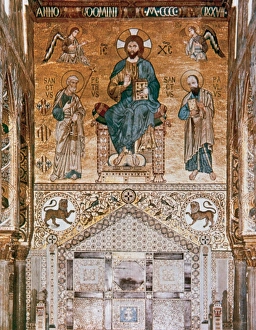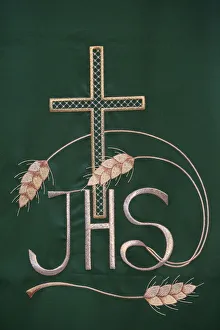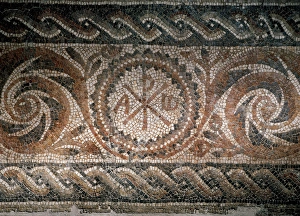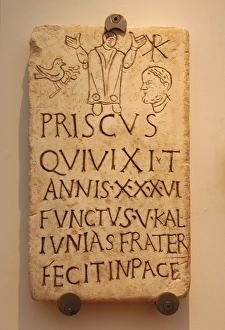Christogram Collection
"Exploring the Rich Symbolism of the Christogram in Art and History" The Palace of the Normans, adorned with Byzantine mosaics at the Palatine Chapel
All Professionally Made to Order for Quick Shipping
"Exploring the Rich Symbolism of the Christogram in Art and History" The Palace of the Normans, adorned with Byzantine mosaics at the Palatine Chapel, offers a glimpse into the significance of the Christogram. This ancient symbol, known as Xpistos in Greek, represents Christ and holds great importance in Christian iconography. Roman tombstones with Christian iconography depict powerful representations that highlight the influence of this monogram. The Chi-Rho symbol is prominently featured in Byzantine art found in Serjilla, Syria - a testament to its widespread use across Western Asia. A Roman mosaic showcasing the Chi-Rho symbol alongside alpha and omega further emphasizes its connection to Christianity. Similarly, an Italian Roman funerary stele from the 4th century AD showcases how deeply ingrained this sacred monogram was within society. In later centuries, artists continued to explore and interpret this powerful symbol. A 15th-century artwork titled "The Sacred Monogram with Symbols of Evangelists and Crucifixion" demonstrates anonymous creativity while depicting religious themes. Another 15th-century piece called "The Sacred Monogram and Wounds of Christ" delves deeper into symbolism surrounding Christ's suffering. These artworks serve as reminders of faith during turbulent times. Even coins portrayed Emperor Magnentius bearing this significant emblem between 350-353 AD. Its presence on currency reflects both political power dynamics and religious beliefs intertwined during that era. Moving forward through history, a design for a tabernacle printed around 1750-56 showcases intricate details incorporating elements like Chi-Rho symbols - highlighting their enduring relevance even centuries later. Terracotta lamps decorated with Chi-Rho motifs offer glimpses into everyday objects infused with spiritual meaning. Such artifacts remind us that faith permeated various aspects of life throughout history. Lastly, an altar stone featuring an abbreviation for Jesus Christ's name serves as a focal point for worshipers, emphasizing the importance of this monogram in religious rituals.































